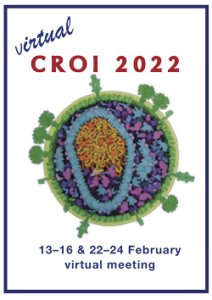CROI 2022: Long-acting doravirine implants as PrEP to prevent vaginal HIV transmission in mouse study
1 March 2022. Related: Conference reports, HIV prevention and transmission.
 Kirk Taylor, HIV i-Base
Kirk Taylor, HIV i-Base
A poster at CROI 2022 reported results from a mouse study using a long-acting formulation of the NNRTI doravirine (LA-DOR) as PrEP that could be used in a removable implant. [1]
Long-acting (LA) HIV therapies have potential to increase adherence and reduce risk of drug-resistant mutations. Doravirine is an NNRTI that has an IC95 of 8.1 ng/mL against HIV-1 and has efficacy against NNRTI-resistant strains.
Doravirine was stably released into the plasma of mice across the five-month study period consistently exceeded IC95 values.
LA-DOR achieved good tissue distribution with plasma:tissue ratios >1.0. Doravirine concentrations were highest in GI tissues. Concentrations of doravirine (in three animals) in vaginal (mean: 206 ng/g, range: 38.2 to 229), cervical (mean: 271.2 ng/g, range: 42.5 to 336) and uterine (mean: 122.3 ng/ml, range: 51.6 to 157) tissues displayed a wide range but were consistently above IC95 levels at week 5.
The animals were challenged by vaginal transmission. LA-DOR reduced viral load in plasma and cervical tissue sections of mice who became HIV positive by 2 and 3-5 log copies/mL, respectively.
Efficacy of LA-DOR as PrEP was assessed following repeated exposure to HIV. Detection of HIV occurred after the first exposure in 80% of mice that received placebo (n=5). LA-DOR effectively reduced vaginal HIV transmission with a single mouse testing positive after the third exposure (n=8).
This preclinical study indicates that LA-DOR implants stably release drug for >5 months. Plasma (week 20) and tissue concentrations (week 5) exceeded the IC95 and implant removal rapidly lowered plasma DOR.
Further studies will evaluate the tissue distribution of DOR at later timepoints. Vaginal transmission data raise the prospect that LA-DOR implants could contribute to PrEP strategies for high-risk women.
comment
NNRTIs are not generally a good class for PrEP due to the class potential for hypersensitivity reactions and low threshold to drug resistance.
The clinical implications of drug resistance are also more serious when the same drugs are commonly used for both PrEP and treatment.
Whilst the data presented are promising, the barrier for PrEP efficacy also needs to be closer to 100%, although sample sizes in this study are very small and longer-term efficacy data are required.
References
- Kovarova et al. Long acting doravirine for treatment and prevention of vaginal HIV transmission. CROI 2022. 12-16 February 2022, virtual. Poster abstract 446.
https://www.croiconference.org/abstract/long-acting-doravirine-for-treatment-and-prevention-of-vaginal-hiv-transmission/
This report was first published on 17 February 2022.

